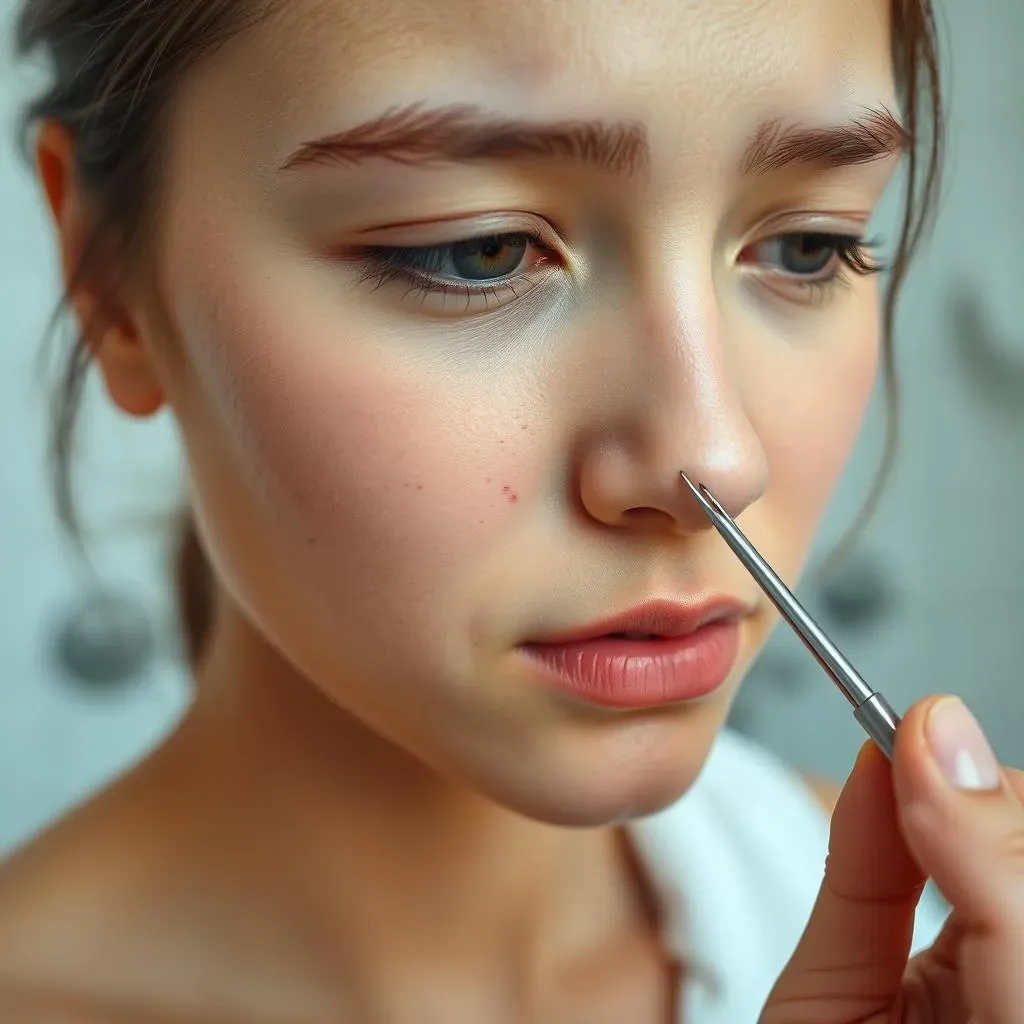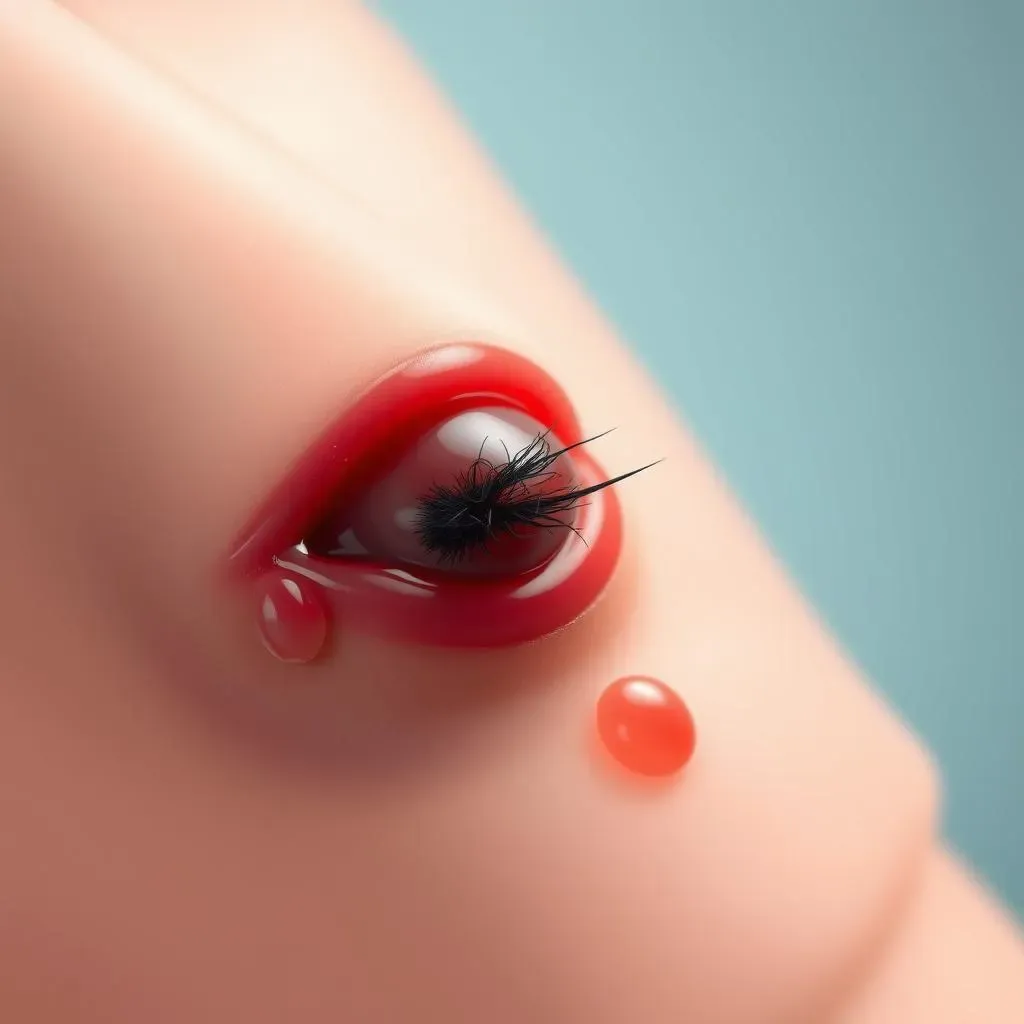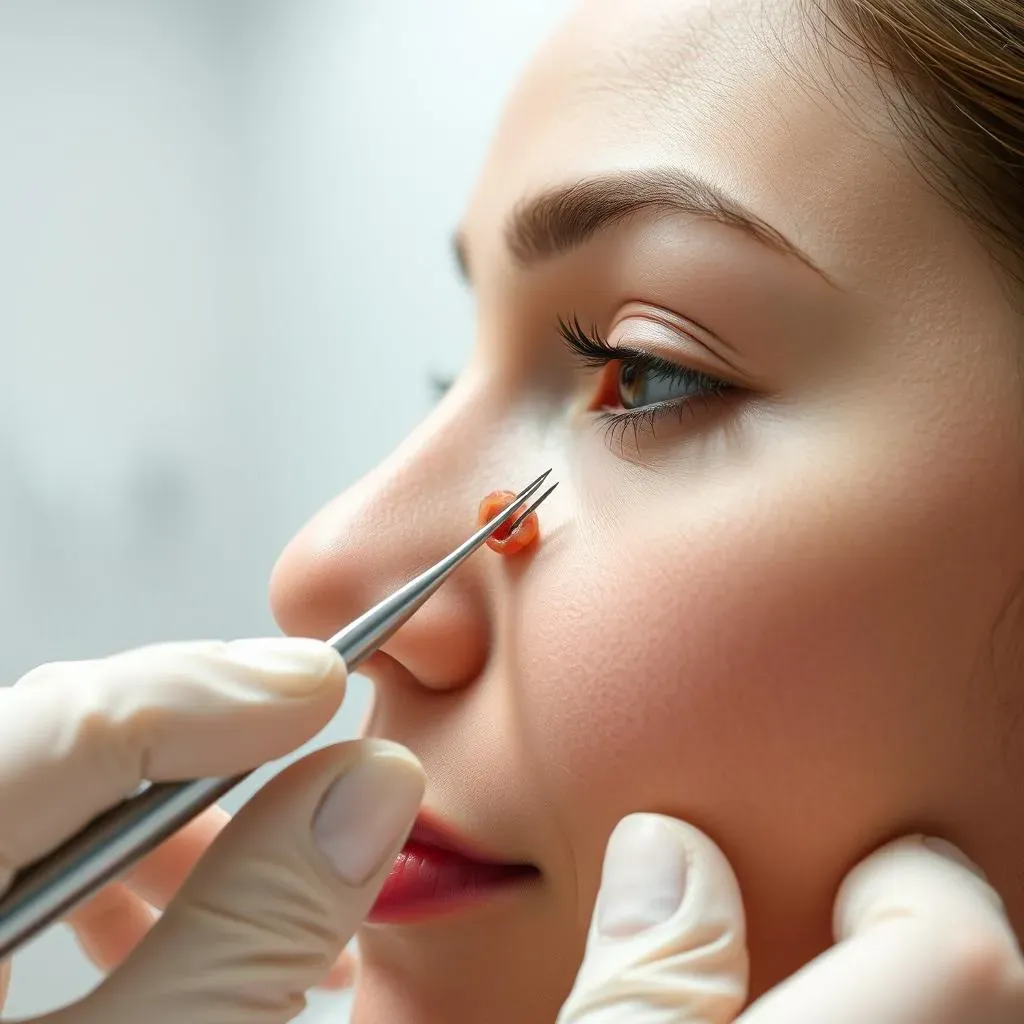Table of Contents
Ingrown hairs on the face can be a frustrating and painful problem, causing bumps, redness, and discomfort. Removing an ingrown hair on face requires careful consideration to avoid further irritation and potential infection. Whether you're dealing with a single ingrown hair or recurring issues, it's essential to understand the causes, symptoms, and effective removal methods. In this article, we'll delve into the world of ingrown hairs, exploring the reasons behind their occurrence, symptoms to look out for, and most importantly, safe and effective techniques for removing ingrown hair on face. We'll also discuss preventive measures to minimize the risk of ingrown hairs and provide guidance on when to seek medical attention for infected ingrown hairs. By the end of this article, you'll be equipped with the knowledge to tackle ingrown hairs confidently, ensuring your skin remains healthy and smooth.
Understanding Ingrown Hair on Face: Causes and Symptoms of Ingrown Hairs

Understanding Ingrown Hair on Face: Causes and Symptoms of Ingrown Hairs
Ingrown hairs on the face occur when a hair grows back into the skin, causing inflammation, redness, and discomfort. This can happen anywhere on the face, but areas that are frequently shaved, waxed, or threaded are more prone to ingrown hairs. People with curly or coarse hair are also more likely to experience ingrown hairs due to the shape of their hair follicles.
The symptoms of ingrown hairs can vary from mild to severe. Common signs include small, bumps or papules on the skin, redness and inflammation around the affected area, itching or burning sensations, and in some cases, pus-filled blisters. If left untreated, ingrown hairs can lead to infections, scarring, and hyperpigmentation.
Causes of Ingrown Hairs
- Shaving too closely or with a dull razor
- Waxing or threading, which can cause hair to break off below the skin surface
- Tight clothing, which can cause friction and push hairs back into the skin
- Genetics, as people with curly or coarse hair are more prone to ingrown hairs
- Poor exfoliation, allowing dead skin cells to clog pores and trap hairs
Symptoms of Ingrown Hairs
Symptom | Description | Severity |
|---|---|---|
Bumps or Papules | Small, raised bumps on the skin | Mild |
Redness and Inflammation | Red, swollen, and tender skin around the ingrown hair | Moderate |
Pus-filled Blisters | Pus-filled bumps that can be painful and may lead to infection | Severe |
Removing Ingrown Hair on Face: Safe Methods and Techniques for Hair Removal

Removing Ingrown Hair on Face: Safe Methods and Techniques for Hair Removal
Removing an ingrown hair on face requires careful consideration to avoid causing further irritation or infection. The goal is to coax the ingrown hair out of the skin without pushing it deeper. Here are some safe methods and techniques for hair removal:
- Exfoliate the skin: Gently exfoliating the skin around the ingrown hair can help remove dead skin cells and allow the hair to exit the skin more easily.
- Apply warm compresses: Soaking the affected area with a warm compress can help soften the skin and bring the ingrown hair to the surface.
- Use tweezers: If the ingrown hair is visible, tweezers can be used to carefully pull it out. However, this should be done with caution to avoid breaking the hair and pushing it further into the skin.
It's essential to avoid using harsh chemicals, scratching, or picking at the ingrown hair, as these methods can lead to infection and scarring. Instead, consider using topical creams or ointments containing ingredients like salicylic acid or tea tree oil, which can help reduce inflammation and promote healing.
Treatment | Benefits | Risks |
|---|---|---|
Exfoliation | Removes dead skin cells, helps hair exit the skin | May irritate skin if done too aggressively |
Warm Compresses | Softens skin, brings hair to the surface | May cause burns if water is too hot |
Tweezers | Can remove ingrown hair if visible | May push hair deeper into skin if not done carefully |
Professional Removal Methods
If the ingrown hair is severe or persistent, it may be necessary to seek professional help. A dermatologist or healthcare professional can use specialized tools to remove the ingrown hair. In some cases, they may prescribe antibiotics to treat any underlying infection.
- Professional extraction: A dermatologist can use a sterile needle to carefully remove the ingrown hair.
- Laser hair removal: This method can provide a long-term solution by reducing hair growth in the affected area.
- Chemical depilatories: These can dissolve the hair protein, making it easier to remove the ingrown hair.
Preventing Ingrown Hair on Face: Tips for Avoiding Ingrown Hairs and Maintaining Healthy Skin

Preventing Ingrown Hair on Face: Tips for Avoiding Ingrown Hairs and Maintaining Healthy Skin
Preventing Ingrown Hair on Face: Tips for Avoiding Ingrown Hairs and Maintaining Healthy Skin
Preventing ingrown hairs on the face requires a combination of good skincare habits, proper hair removal techniques, and lifestyle changes. One of the most effective ways to prevent ingrown hairs is to exfoliate the skin regularly. Exfoliation helps remove dead skin cells, which can clog pores and trap hairs, leading to ingrown hairs. Use a gentle exfoliating scrub or a chemical exfoliant containing alpha-hydroxy acids (AHAs) or beta-hydroxy acids (BHAs) one to three times a week.
Another crucial step in preventing ingrown hairs is to shave correctly. Always shave in the direction of hair growth, not against it. Shaving against the grain can cause the hair to be cut at an angle, leading it to grow back into the skin. Use a sharp razor and shaving gel, and avoid shaving over the same spot multiple times. Consider using an electric razor or trimming instead of shaving, especially in areas prone to ingrown hairs.
Exfoliation Method | Frequency | Benefits |
|---|---|---|
Physical Exfoliation (scrubs) | 1-2 times a week | Removes dead skin cells, improves skin texture |
Chemical Exfoliation (AHAs/BHAs) | 1-3 times a week | Penetrates deeper, unclogs pores, promotes cell turnover |
Additional Tips for Prevention
In addition to exfoliation and proper shaving techniques, there are several other ways to prevent ingrown hairs. Wear loose, breathable clothing to reduce friction, which can cause hairs to curl back into the skin. Avoid tight underwear, which can cause ingrown hairs in the pubic area. Maintain good hygiene by washing your skin regularly, especially after sweating. Consider using a gentle, fragrance-free cleanser and moisturizer suitable for your skin type.
For those who experience frequent ingrown hairs, consider alternative hair removal methods. Waxing, sugaring, or threading can cause hairs to break off below the skin surface, leading to ingrown hairs. Instead, opt for depilatory creams, which dissolve hair at the surface, or consider long-term hair removal methods like laser hair removal. These methods can significantly reduce the occurrence of ingrown hairs over time.
- Avoid shaving over the same spot multiple times
- Use a sharp razor and shaving gel
- Wear loose, breathable clothing
- Stay hydrated to keep skin moist and healthy
- Consider alternative hair removal methods
Maintaining Healthy Skin
Maintaining healthy skin is crucial in preventing ingrown hairs. Keeping your skin moisturized can help prevent dryness and irritation, reducing the likelihood of ingrown hairs. Use a gentle moisturizer suitable for your skin type, and apply it immediately after bathing or shaving while the skin is still damp. A healthy diet rich in fruits, vegetables, and whole grains can also promote skin health, as can staying hydrated by drinking plenty of water.
Understanding your skin type and conditions is also important. If you have curly or coarse hair, you may need to take extra precautions to prevent ingrown hairs. Consider consulting a dermatologist for personalized advice on skincare and hair removal. By combining these tips and maintaining good skincare habits, you can significantly reduce the occurrence of ingrown hairs and keep your skin looking and feeling its best.
Treating Infected Ingrown Hair on Face: When to Seek Medical Attention and How to Manage Symptoms

Treating Infected Ingrown Hair on Face: When to Seek Medical Attention and How to Manage Symptoms
Identifying Infected Ingrown Hairs
Infected ingrown hairs can be painful and may require medical attention. Signs of infection include increased redness, swelling, and pus around the ingrown hair. You may also experience fever, chills, or increased sensitivity in the affected area. If you notice any of these symptoms, it's essential to seek medical help to prevent the infection from spreading and causing further complications.
A pharmacist can provide guidance on over-the-counter creams, ointments, and other products to help manage symptoms. However, in severe cases, a doctor may need to remove the ingrown hair or prescribe antibiotic cream or tablets to treat the infection. Avoid scratching, picking, or squeezing the ingrown hair, as this can push the infection deeper into the skin and lead to scarring.
Signs of Infection | Description | Severity |
|---|---|---|
Increased Redness and Swelling | Area around the ingrown hair becomes red, swollen, and tender | Moderate to Severe |
Pus or Discharge | Pus-filled blisters or discharge from the ingrown hair | Severe |
Fever | Body temperature rises above 98.6°F (37°C) | Severe |
Managing Symptoms and Seeking Medical Attention
If you're experiencing symptoms of an infected ingrown hair, it's crucial to manage them effectively while seeking medical attention. Apply a warm compress to the affected area to help bring the infection to the surface and promote drainage. Keep the area clean with mild soap and lukewarm water, and pat it dry. Avoid sharing personal items, such as towels or razors, to prevent the spread of infection.
Topical creams or ointments containing ingredients like hydrocortisone or tea tree oil can help reduce inflammation and fight infection. However, always consult a pharmacist or doctor before using any new products, especially if you're unsure about the severity of the infection. In some cases, oral antibiotics may be prescribed to treat the infection from the inside out.
- Apply warm compresses to the affected area
- Keep the area clean with mild soap and lukewarm water
- Use topical creams or ointments as directed
- Avoid sharing personal items
- Consider oral antibiotics if prescribed by a doctor
Permanent Solutions for Ingrown Hair Removal on Face: Exploring LongTerm Hair Removal Methods

Permanent Solutions for Ingrown Hair Removal on Face: Exploring LongTerm Hair Removal Methods
Introduction to Permanent Hair Removal
For individuals who experience frequent ingrown hairs, permanent hair removal methods can provide a long-term solution. These methods reduce hair growth, minimizing the risk of ingrown hairs. Laser hair removal, electrolysis, and intense pulsed light (IPL) therapy are popular options for achieving permanent hair reduction.
Laser hair removal uses a laser to target the hair follicle, damaging it to prevent future growth. This method is effective for most skin types and can be used on various areas of the face. Electrolysis involves inserting a fine needle into each hair follicle and applying a small electrical charge to destroy the hair root. IPL therapy uses broad-spectrum light to target the hair follicle, reducing growth over time.
Method | Description | Effectiveness |
|---|---|---|
Laser Hair Removal | Targets hair follicle with laser, reducing growth | Highly effective for most skin types |
Electrolysis | Destroys hair root with electrical charge | Effective but time-consuming and painful |
IPL Therapy | Reduces hair growth with broad-spectrum light | Effective, but may require multiple sessions |
Benefits and Considerations of Permanent Hair Removal
Permanent hair removal methods offer several benefits, including a significant reduction in ingrown hairs, smoother skin, and less time spent on hair removal. However, these methods can be expensive and may require multiple sessions. It's essential to choose a qualified practitioner and discuss potential risks, such as skin irritation or paradoxical hypertrichosis (excessive hair growth).
Additionally, individuals with darker skin tones may need to take extra precautions to avoid skin damage from laser or IPL therapy. It's crucial to follow pre- and post-treatment instructions carefully to minimize the risk of complications.
- Reduces ingrown hairs and shaving time
- Smoothes skin texture
- Minimizes risk of ingrown hairs
- May be expensive
- Requires multiple sessions
- Potential skin irritation or paradoxical hypertrichosis
Alternative Methods for Hair Reduction
For those who prefer not to undergo permanent hair removal, there are alternative methods to reduce hair growth. Depilatory creams dissolve hair at the surface, making it easy to wipe away. These creams are painless and can be used at home but may not be as effective for coarse or thick hair.
Threading and sugaring are other alternatives to shaving, but they can still cause ingrown hairs if not done properly. It's essential to follow the correct technique and maintain good skincare habits to minimize the risk of ingrown hairs.
Conclusion: Taking Control of Ingrown Hairs on Your Face
Removing an ingrown hair on face requires patience, gentleness, and the right techniques. By understanding the causes of ingrown hairs and implementing preventive measures such as proper shaving techniques, exfoliation, and considering long-term hair removal methods, you can significantly reduce the occurrence of ingrown hairs. For existing ingrown hairs, gentle removal methods and appropriate treatment can help alleviate symptoms and prevent infection. Remember, if your ingrown hair becomes severely infected or doesn't improve with self-care, it's crucial to seek medical attention. With the tips and strategies outlined in this article, you'll be well on your way to smoother, healthier skin and a face free from the discomfort of ingrown hairs.
